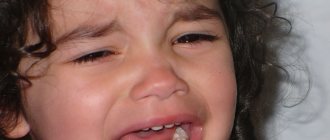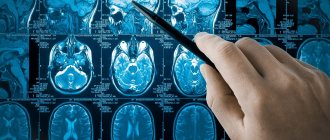Forms of speech therapy work for dysarthria
Forms of speech therapy work with children with dysarthria include:
- drug treatment of the disorder that became the source of the disease;
- physiotherapeutic techniques;
- articulation gymnastics;
- psychotherapeutic support;
- work of a speech therapist.
Speech therapy work with children with dysarthria is carried out gradually. The key task of the initial stage is preparing the articulatory apparatus, straightening the voice, and correcting breathing. The primary task is the formation of sensory functions, especially sound analysis, and in addition the perception and reproduction of tempo. The work of a speech therapist is performed in conjunction with physical therapy, physiotherapeutic procedures, drug therapy and the use of massage.
The second stage is to achieve initial communication skills. Its key goal is to develop sound analysis and communication capabilities. Speech therapy work is carried out to correct pronunciation. In cases of spasm, they work on the muscles of the speech apparatus, relaxing them. Correct respiration (breathing) skills are formed and the vocal cords are trained.
Equally important is a speech therapy examination of a child with dysarthria. A key element is the work of a speech therapist for cerebral palsy. Children with this diagnosis have problems with motor functions. They are caused by an unnatural state of muscle activity and a defect in motor control. Motor lesions are often combined with speech pathology, damage to receptivity, and gaps in the cognitive, volitional and emotional spheres.
Model of speech therapy work for dysarthria and methodological development in speech therapy on the topic
Features of speech therapy work for dysarthria.
Dysarthria is a violation of sound pronunciation and prosody caused by insufficient innervation of the muscles of the speech apparatus. Due to insufficient innervation of the muscles of the articulatory, vocal, and respiratory apparatus, not only sound pronunciation is impaired, but also the voice and speech breathing. With dysarthria, the motor mechanism of speech is disrupted due to organic damage to the central nervous system. The structure of a speech defect is a violation of the entire pronunciation aspect of speech.
An integrated approach to eliminating dysarthria includes three blocks.
The first block is medical, which is determined by a neurologist. In addition to medications, exercise therapy, massage, reflexology, physiotherapy and others are prescribed.
The second block is psychological and pedagogical. The main directions of this impact will be: the development of sensory functions. By developing auditory perception and forming auditory gnosis, the basis for the formation of phonemic hearing is thereby prepared. By developing visual perception, differentiation and visual gnosis, we thereby prevent graphic errors in writing. By implementing this direction, stereognosis is also being developed. In addition to the development of sensory functions, the psychological and pedagogical block includes exercises for the development and correction of spatial concepts, constructive praxis, graphic skills, memory, and thinking.
The third block is speech therapy work, which is carried out mainly on an individual basis. Taking into account the structure of the defect in dysarthria, speech therapy work is recommended to be planned according to the following stages:
The first stage of work is preparatory and contains the following areas:
1) Normalization of muscle tone of facial and articulatory muscles. Speech therapy massage is provided.
2) Normalization of motor skills of the articulatory apparatus. For this purpose, we carry out differentiated articulation gymnastics techniques. Passive exercises performed by the speech therapist himself are aimed at inducing kinesthesia. Active articulatory gymnastics gradually becomes more complicated and functional loads are added. This type of articulatory gymnastics is aimed at strengthening kinesthesia and improving the quality of articulatory movements.
3) Voice normalization. For this purpose, voice exercises are carried out, which are aimed at causing a stronger voice and modulating the voice in pitch and strength.
4) Normalization of speech breathing. For this purpose, the speech therapist conducts short-term exercises to develop a longer, smoother, more economical exhalation.
5) Normalization of prosody. This direction is the least developed at the first stage. In the specialized literature, there are descriptions of the prosodic aspect of speech in children with dysarthria: these are disorders such as a quiet and unmodulated voice, disturbances in the rate of speech and timbre of the voice, poor intonation, poor speech intelligibility, lack of pauses and logical stresses, and other symptoms of prosody.
6) Normalization of fine motor skills of the hands. For this purpose, finger gymnastics is carried out, aimed at developing subtle, differentiated movements in the fingers of both hands.
All exercises of the first stage gradually become more difficult.
The second stage of speech therapy work for dysarthria is the development of new pronunciation skills. The directions of the second stage of speech therapy work are carried out against the background of ongoing exercises listed in the first stage, but more complex. The directions of the second stage are:
1) Development of the main articulatory structures (dorsal, cacuminal, alveolar, palatal). Each of these positions determines, respectively, the articulation of whistling, hissing, sonorant and palatal sounds. Having mastered a number of articulatory movements in the first stage, at the second stage we move on to a series of sequential movements performed clearly, exaggeratedly, based on visual, auditory, and kinesthetic control.
2) Determining the sequence of work to correct sound pronunciation. For dysarthria in children, depending on the presence of pathological symptoms in the articulatory area and the degree of its severity, the sequence of work on sounds is individually determined. In some cases, they adhere to the traditional order, which recommends staging with broken whistling sounds.
It is recommended, when working to correct sound pronunciation for dysarthria, to clarify or call up that group of sounds whose articulatory structure has “ripened” first of all. And these can be even more difficult sounds, for example: in the alveolar position - r, r, and whistling ones will be corrected later, after the dorsal position has “matured” (which is one of the difficult ones for children).
3) Development of phonemic hearing. The work is carried out according to the classical scheme. Phonemic awareness refers to the child’s ability to identify and distinguish phonemes of his native language.
4) Evoking a specific sound. This work for dysarthria is carried out in the same way as for any other disorder, including dyslalia. This means that the speech therapist uses classical methods of producing sounds (by imitation, mechanical, mixed methods).
5) Sound automation is the most difficult area of work in the second stage. Often in practice, speech therapists are faced with the fact that children in isolation pronounce all sounds correctly, but in the speech stream the sounds lose their differentiated characteristics and are pronounced distorted.
6) Differentiation of the delivered sound in pronunciation with oppositional phonemes. The sequence of presented lexical material is similar to the sequence when automating a given sound. It is only suggested, for example: 2 syllables (sa - sha, as - ash, sta - shta, tsa - tsha, etc.). Then pairs of words, different in syllable structure, etc.
The third stage of speech therapy work is devoted to the development of communication skills.
1) One of the most difficult areas of work is developing self-control skills in a child. Often, speech therapists are faced with a situation where a child, in an office setting, in contact with a speech therapist, demonstrates acquired skills in speech. But when the situation changes, in the presence of other people, the skill that seemed strong disappears, and the child returns to the previous stereotypical pronunciation. To develop communication skills, the child’s active position and motivation to improve speech are necessary. In this area of speech therapy work, the speech therapist must act as a psychologist and, on an individual basis, determine ways to develop self-control skills in the child.
2) A more traditional direction at this stage is the introduction of sound into speech in a learning situation (memorizing poetry, composing sentences, stories, retellings, etc.).
3) The specific direction of the stage is the inclusion of prosodic means in the lexical material: various intonations, modulations of the voice in pitch and strength, changes in the tempo of speech and timbre of the voice, determination of logical stress, observance of pauses, etc.
The fourth stage of speech therapy work is called preventing or overcoming secondary disorders in dysarthria. Bearing in mind the prevention of secondary disorders, early diagnosis of dysarthria should be ensured, as well as early corrective work should be organized. Technologies for correctional work with children at risk for dysarthria at different age periods have been developed. However, preventive work is carried out with children who have severe organic pathology in a hospital setting. The majority of children at risk for dysarthria (mild degree), who have a neuropathologist’s diagnosis of PEP (perinatal encephalopathy) in the first year of life, are deprived of the opportunity to receive adequate corrective propaedeutic care, since hospital treatment is not indicated for them. By the end of the first year of life, the neurologist removes the diagnosis of PEP. And only during a dispensary examination does a speech therapist at the clinic, with a thorough examination, see the symptoms of MDD (minimal dysarthric disorders). These symptoms entail secondary disturbances in the formation of linguistic means (vocabulary, grammar). A consequence of insufficient prevention of secondary disorders is a large number of children with dysarthria complicated by either ODD or FFD.
The fifth stage of speech therapy work is preparing a child with dysarthria for school. The main directions of speech therapy work are: the formation of graphomotor skills, psychological readiness for learning, and the prevention of dysgraphic errors.
What forms of the disease are observed
Considering the level of distribution of damage to speech function, bulbar, pseudobulbar, extrapyramidal, cerebellar, and cortical forms are distinguished. The formation of the prosodic component of speech in dysarthria occurs through singing, during which it is necessary to change the strength of the voice and intonation. Exercise, breathing and pronunciation exercises are of no small importance when correcting voice pathologies.
The complex of effects of speech therapy classes for dysarthria allows you to:
- develop the articulatory apparatus,
- develop your voice (timbre, strength, pitch, range),
- develop breathing (depth and duration of inhalation and exhalation).
Timely commencement of speech therapy work for dysarthria in preschool children on an ongoing basis will lead to rapid correction of speech function.
Therapeutic gymnastics is part of logorhythmic work with patients who suffer from dysarthria. It is compiled in conjunction with a speech therapy correction course.
Corrective speech therapy work for dysarthria is aimed at developing static movements; formation of fine motor skills of the fingers; education of the movement of the limbs and torso with the gradual introduction of work with things; improving the condition of facial muscles; training of all types of memory, attention; gradual development of healthy breathing skills; victory over prosodic disorders in disease.
Speech therapy work to overcome dysarthria includes general motor warm-up; voice, breathing, articulation gymnastics; mixed massage.
Elimination of erased dysarthria
To eliminate erased dysarthria, a complex intervention is required, including medical, psychological, pedagogical and speech therapy. Medical intervention determined by a neurologist should include drug therapy, exercise therapy, reflexology, massage, physiotherapy, etc. Psychological and pedagogical intervention carried out by defectologists , psychologists, educators, parents is aimed at:
- development of sensory functions; — clarification of spatial representations; — formation of constructive praxis; — development of higher cortical functions; — formation of subtle differentiated hand movements; — formation of cognitive activity; - psychological preparation of the child for school.
Speech therapy work for erased dysarthria requires the mandatory inclusion of parents in correctional speech therapy work. Speech therapy work includes several stages. At the initial stages, work is planned to normalize the muscle tone of the articulatory apparatus. For this purpose, the speech therapist conducts differentiated massage. Exercises are planned to normalize the motor skills of the articulatory apparatus, exercises to strengthen the voice and breathing. Special exercises are introduced to improve speech prosody. An obligatory element of speech therapy classes is the development of fine motor skills of the hands.
The sequence of practicing sounds is determined by the preparedness of the articulatory base. Particular attention is paid to the selection of lexical material during automation and differentiation of sounds. One of the important points in speech therapy work is the development of self-control in the child over the implementation of pronunciation skills. Correction of erased dysarthria in preschool children prevents dysgraphia in schoolchildren.
Violation of the pronunciation aspect of speech, caused by insufficient innervation of the muscles of the speech apparatus, also refers to dysarthria (E.M. Mastyukova, M.V. Ippolitova). The leading structure of a speech defect in dysarthria is a violation of the sound pronunciation and prosodic aspects of speech. Mildly expressed brain disorders can lead to the appearance of erased dysarthria, which should be considered as the degree of manifestation of dysarthria. Faint, erased disorders of the cranial nerves can be established during long-term dynamic observation, when performing increasingly complex motor tasks. M.B. Eidinova, E.N. Pravdina-Vinarskaya describes cases of mild residual innervation disorders encountered during an in-depth examination, which underlie violations of full articulation, which leads to inaccurate pronunciation.
Erased dysarthria can be observed in children without obvious movement disorders, who have suffered mild asphyxia or birth trauma, who have a history of PEDs and other mildly expressed adverse effects during fetal development or during childbirth, as well as after birth. In these cases, mild (erased) dysarthria is combined with other signs of minimal brain dysfunction (E.M. Mastyukova). The brain of a young child has significant plasticity and high compensatory reserves. A child with early cerebral damage by the age of 4-5 years loses most of the symptoms, but a persistent violation of sound pronunciation and prosody may remain. In children with erased dysarthria, due to damage to the central nervous system and impaired innervation of the muscles of the speech apparatus, the necessary kinesthesia is not formed, as a result of which the pronunciation side of speech does not spontaneously improve.
Existing methods for correcting erased dysarthria in preschool children do not solve the problem in full, and further development of methodological aspects of eliminating dysarthria is relevant. A study of preschool children with erased dysarthria showed that, along with disturbances in the function and tone of the articulatory apparatus, a deviation in the state of gross and fine manual motor skills is characteristic of this group of children, which is consistent with the literature data of recent years.
Many works emphasize that with erased dysarthria it is necessary to develop fine motor skills of the hands . The proximity of the cortical zones of innervation of the articulatory apparatus with the zones of innervation of the muscles of the fingers, as well as neurophysiological data on the importance of manipulative activity of the hands for stimulating speech development, determine this approach to correctional work.
Children with erased dysarthria are characterized by: 1. Phonetic disorders. 2. Phonemic disorders. 3. Violation of prosody. 4. Violation of the lexico-grammatical component of the language. 5. Gross motor disorder. 6. Fine motor skills disorder of the fingers. 7. Articulatory motor disorder.
Speech therapy work to eliminate erased dysarthria may include five stages. Stage 1 - preparatory. The purpose of this stage is to prepare the articulatory apparatus for the formation of articulatory structures. It includes six areas: 1) normalization of muscle tone, 2) normalization of the motor skills of the articulatory apparatus, 3) normalization of speech exhalation, the development of a smooth, long exhalation, 4) normalization of the voice, 5) normalization of prosody, 6) normalization of fine motor skills of the hands.
Stage 2 - development of new pronunciation skills. Directions: 1) development of basic articulatory patterns, 2) determination of the sequence of work on sounds, 3) development of phonemic hearing, 4) sound production, 5) automation, 6) differentiation (differentiation by ear; differentiation of articulation of isolated sounds; pronunciation differentiation at the syllable level , words).
Stage 3 - development of communication skills. Directions: 1) development of self-control, 2) training of correct speech skills in various speech situations.
Stage 4 - overcoming or preventing secondary violations.
Problems will certainly go away
The work of a speech therapist for dysarthria is aimed at restoring the softness of speech. The articulation apparatus is warmed up through special exercises. Massage is included in the treatment. As the patient regains the ability to speak, the doctor begins to work on speech clarity.
Individual speech therapy sessions for dysarthria include massage, psychological consultations, physical therapy, including exercises to restore movements. The specialists of our Center are able to awaken interest in classes even in those children who initially do not perceive speech therapy classes as something attractive, so the results are not long in coming. At the same time, treatment with medications is carried out.
Only through the interaction of the child himself, his parents and several medical specialists can one count on a quick and effective result.
The work of a speech therapist-defectologist for dysarthria
In this case, the speech pathologist-defectologist takes on the responsible role of correcting existing disorders in the child’s speech. It is very important that parents understand the need for regular classes and mandatory homework.
With the right approach, the prognosis for the erased form of dysarthria is the most favorable. The child is fully capable of mastering correct speech and will be able to successfully study at school.
What is included in the classes:
- Articulation gymnastics. It is necessary in order to “teach” the tongue to take the correct place when pronouncing a particular sound.
- Exercises to develop correct speech breathing.
- Development of fine motor skills. It is widely known that the better the coordination of the fingers, the faster correct speech is formed.
- Formation of spatial orientation.
- Speech therapy tongue massage. Even due to minor brain damage, many children have disturbances in the tone of the articulatory apparatus. A special massage helps relieve excess tone or, conversely, strengthen the necessary muscles.
- Establishing the correct pronunciation of sounds.
Dysarthria - symptoms and treatment
The following forms of dysarthria are distinguished depending on the damage to brain structures [9].
Bulbar dysarthria is a consequence of damage to the bulbar group of cranial nerves: glossopharyngeal, vagus and hypoglossal. Characterized by weakness of articulation muscles, decreased muscle tone. As a result, speech is slurred, extremely slow, and the face is depleted of facial expressions.
Subcortical dysarthria occurs with lesions of the subcortical nodes of the brain. It is distinguished by the presence of hyperkinesis - violent facial movements uncontrollable by the child. Muscle tone changes from normal to increased. The tempo-rhythmic organization of speech suffers.
Cerebellar dysarthria is observed when the cerebellum or its connections with other structures of the nervous system are damaged. It is distinguished by scanned, “chopped” speech. There is no smooth transition from one word to another.
Cortical dysarthria , as the name suggests, is associated with damage to the cerebral cortex, namely, the lower part of the anterior central gyrus of one or both hemispheres. Also, cortical dysarthria is diagnosed when the dominant hemisphere is damaged (for right-handers - left, for left-handers - right) in the lower postcentral parts of the cortex. Children with this form are good at mastering isolated pronunciation of sounds, but have great difficulty using them in the flow of speech, and sometimes skip them altogether.
Pseudobulbar dysarthria is noted with bilateral damage to the motor corticonuclear tracts connecting the nuclei of the cranial nerves of the brain stem with the cortex. Characterized by the inability to organize clear rhythmic movements. In early childhood, such a child often chokes and has difficulty chewing; at an older age, a number of speech problems are discovered due to poor mobility of the articulatory muscles; speech is extremely slurred.
There are several degrees of dysarthria [6]:
First degree. Most often they talk about erased dysarthria; in this case, defects in sound pronunciation may be barely noticeable to others. They are identified by a speech therapist and, when corrected, are particularly resistant, which means that a lot of time and effort will have to be spent. As a rule, such children are seen by a neurologist at 1-2 years of age, but thanks to the plasticity of the child’s nervous system, many symptoms are compensated for by 4-5 years, and the child “outgrows” them. An unpleasant surprise is persistent problems with sound pronunciation in preschool age.
Second degree. Defects in sound pronunciation are very noticeable to others, but overall speech remains understandable. Along with speech symptoms, psychological symptoms are also observed. Often there is a deficiency of fine and gross motor skills, some clumsiness, behavioral disorder, emotional-volitional disorder, attention deficit disorder, hyperactivity, etc.
Children with the first and second degrees of dysarthria, as a rule, have fairly intact thinking.
Third degree. Understanding the speech of a dysarthric child is difficult for others. It is often not clear what the child is saying. Non-speech symptoms are extremely pronounced. A critical level of speech underdevelopment has the most negative impact on the behavior and thought processes of the child. We can talk about disruption of almost all mental functions: memory, attention, thinking, emotional-volitional sphere, etc.
The fourth is the most severe degree. Speech is almost always incomprehensible even to the closest people or is absent altogether.
You can count on complete correction of sounds in speech with the first and second degrees. The third and fourth degrees are diagnosed for severe lesions, for example, in children with cerebral palsy (CP), the prognosis for correction here is less optimistic.






